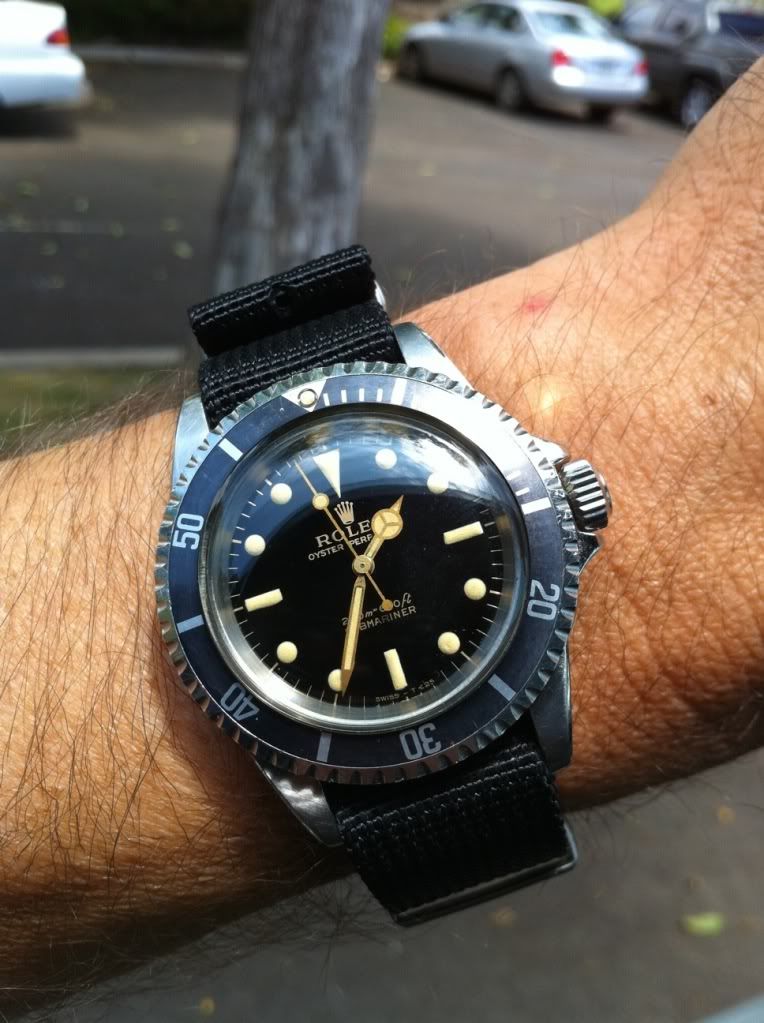
 |
ROLEXROLEXROLEXROLEXROLEXROLEX
 ROLEXROLEXROLEXROLEXROLEXROLEX
ROLEXROLEXROLEXROLEXROLEXROLEX
|
|
#1 |
|
"TRF" Member
Join Date: Nov 2009
Real Name: Mark
Location: Melbourne Aus
Posts: 323
|
Gilt Dial~~ Age & Deterioration
Hi All,
Just a quick question and hoping to find some feedback. I am a mad Gilt dial fan ..... I have 2 questions (1) at what stage of detoriation does the dial too far gone ! ie cracked laquer, base dial colour showing etc etc ? (2) I like to use my gilts as daily wearers and was wondering if there is any acceptable form of preservation without comprimising the dial as a refinshed dial......... ie some form of preservation laquer ? again , thanks in advance for your thought on the above !  Mark |
|
|

|
|
|
#2 |
|
2024 Pledge Member
Join Date: Oct 2009
Location: Hawaiian islands
Posts: 1,109
|
Hi Mark,
Deep into my vintage addiction, I've also become a fan of gilt dials. I'm not sure about your first question, although I've seen many a deteriorated gilt dial being praised for its beauty, so I think the degree of which is a matter of personal taste. As for question 2, according to master watchmaker Bob Ridley, the single biggest factor that affects the rate of deterioration of the dial and components is the water proof seal of the watch. Even if the overall condition looks good, carefully inspect the dial and hands for signs of age such as cracks, pitting, tiny bubble-like texture on the surface of the dial, deterioration (i.e. oxidation) of the hands, Etc. The slightest evidence of these things indicates the seal is compromised and moisture/air/oxygen is entering the watch. This kicks off a chemical process that acts like a chain reaction as long as these elements are present. They act like a fuel source and the only way to halt the process is to have the watch serviced by somebody who really knows what they're doing. Besides the usual cleaning, lubrication, and gasket replacements, when having a complete service done, be prepared to have the crystal replaced as well. That's because 40 year old acrylic crystals become brittle due to another process known as crosslinking. When this happens they develop tiny, even microscopic cracks, the crystals eventually loose their round shape and compromise the seal. Good luck in your gilt dial collecting! -M 
|
|
|

|
|
|
#3 |
|
"TRF" Member
Join Date: Dec 2009
Real Name: Renato
Location: New York
Posts: 2,396
|
|
|
|

|
|
|
#4 | |
|
"TRF" Member
Join Date: Nov 2009
Real Name: Mark
Location: Melbourne Aus
Posts: 323
|
Quote:
I am happy (and have done) the cleaning, servicing, gasket replacement etc, etc but with respect to waterproofing, it may require a service replacement crystal and I dont want to do that as I like the domed crystal on them at the moment. I would like to hear if there is any acceptable form of dial conservation techniques available ? maybe i might be barking up the wrong tree with this one but I am sure that there is a company that preserve old Omegas'............ can anyone shed some light on this ?? rgds Mark |
|
|
|

|
|
|
#5 |
|
Facilitator
Join Date: Nov 2005
Real Name: Steve
Location: Omnipresent
Posts: 33,555
|
Awesome watch -M and a good tip on maintain the beauty of a dial & hands
 
__________________
 Most folks are about as happy as they make up their minds to be. ~Abraham Lincoln Nothing compares to the simple pleasure of a bike ride. ~John F. Kennedy ROLEXploitation - yeah I'm a victim  |
|
|

|
 |
| Currently Active Users Viewing This Thread: 1 (0 members and 1 guests) | |
|
|
*Banners
Of The Month*
This space is provided to horological resources.